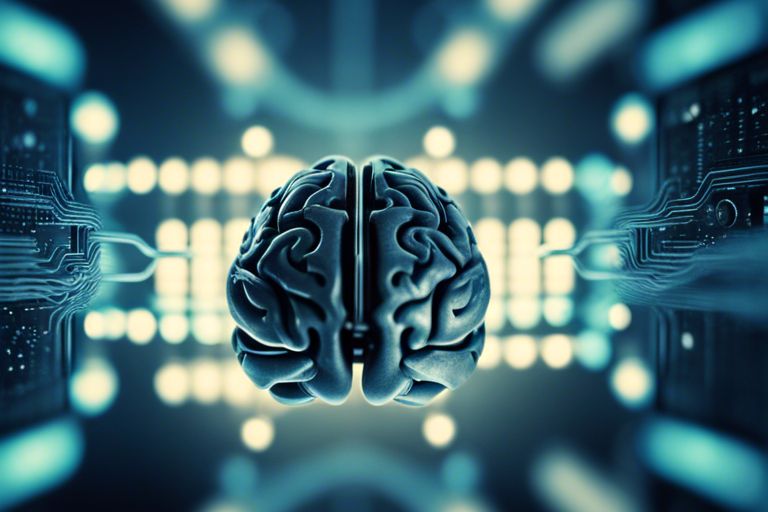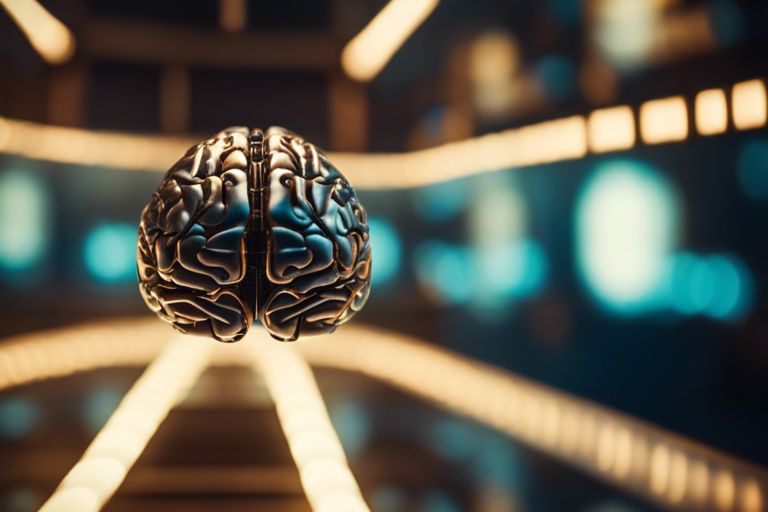Utilizing big data analytics has become a vital strategy for businesses looking to stay ahead in today’s competitive market. By harnessing the power of large datasets, companies can uncover valuable insights, patterns, and trends that can transform their operations and decision-making processes. This data-driven approach allows organizations to make informed choices quickly, improve customer experience, boost efficiency, and ultimately gain a competitive edge over their rivals. In this blog post, we will explore the various ways in which businesses can leverage big data analytics to drive innovation and achieve success in the digital age.
Understanding Big Data
Defining Big Data and its Characteristics
Characteristics of Big Data refer to the three main attributes of data – volume, velocity, and variety. Volume implies the sheer amount of data being generated, whether from traditional sources like databases or new sources like social media. Velocity highlights the speed at which data is being created and processed, requiring real-time or near-real-time analysis. Variety denotes the different types of data available, including structured, unstructured, and semi-structured data.
Big Data is often characterized by the 3 Vs – Volume, Velocity, and Variety. However, in addition to these, Veracity and Value are also important aspects of Big Data. Veracity refers to the trustworthiness of the data being collected, while Value focuses on extracting meaningful insights and value from the data to drive decision-making.
The Evolution of Data Analytics
Any discussion on Big Data is incomplete without tracing the Evolution of Data Analytics. Data Analytics has come a long way from simple business intelligence tools to advanced predictive analytics and machine learning algorithms. This evolution has been primarily driven by the exponential growth in data volumes, the advancement of technology, and the need for businesses to gain deeper insights for strategic decision-making.
In today’s data-driven world, organizations are leveraging Big Data Analytics to gain a competitive edge, improve operational efficiency, and enhance customer experiences.
Big Data Analytics Tools and Technologies
The field of big data analytics is constantly evolving with new tools and technologies being developed to handle the vast amounts of data generated each day. Businesses are increasingly turning to big data analytics to gain valuable insights and stay ahead of the competition. In this chapter, we will explore some of the key tools and technologies that are used in big data analytics.
Data Mining and Predictive Analytics
The process of data mining involves extracting patterns and valuable information from large datasets. By analyzing historical data, businesses can identify trends and make predictions about future outcomes. Predictive analytics takes this a step further by using statistical algorithms and machine learning techniques to forecast future trends and behaviors based on historical data. These techniques help businesses make informed decisions and identify opportunities for growth and improvement.
Data mining and predictive analytics are powerful tools that can help businesses uncover hidden patterns in their data and make accurate predictions about future outcomes. By leveraging these techniques, organizations can optimize their operations, enhance customer experiences, and make data-driven decisions that drive success.
Machine Learning and Artificial Intelligence in Big Data
Artificial intelligence (AI) and machine learning are revolutionizing the field of big data analytics. These technologies enable computers to learn from data, identify patterns, and make decisions with minimal human intervention. In big data analytics, machine learning algorithms are used to analyze large datasets and extract valuable insights that can help businesses make strategic decisions and drive innovation.
The integration of machine learning and artificial intelligence in big data analytics has the potential to transform industries and revolutionize the way businesses operate. By harnessing the power of these technologies, organizations can gain a competitive edge, enhance productivity, and drive growth in an increasingly data-driven world.
Implementing Big Data Analytics in Business
To gain a competitive edge in today’s market, businesses must leverage big data analytics effectively. This involves not only collecting and analyzing large datasets but also implementing strategies for effective data management and learning from successful case studies.
Strategies for Effective Data Management
Analytics plays a crucial role in managing big data effectively. Businesses need to invest in robust data management systems that can handle large volumes of data efficiently. This includes ensuring data quality, implementing data governance policies, and establishing secure data storage solutions. Additionally, businesses should prioritize data integration and synchronization to ensure a unified view of their data across all systems.
Implementing a data-driven culture within the organization is also essential for effective data management. This involves training employees on how to collect, analyze, and interpret data to make informed decisions. Furthermore, businesses should regularly monitor and evaluate their data management processes to identify areas for improvement and optimization.
Case Studies: Success Stories and Lessons Learned
Business case studies provide valuable insights into how organizations have successfully leveraged big data analytics to gain a competitive edge. By studying these success stories, businesses can learn valuable lessons and best practices for implementing their own big data analytics initiatives.
- Netflix: Leveraged customer viewing data to personalize recommendations, leading to a 75% increase in user engagement.
- Amazon: Used big data analytics to improve product recommendations, resulting in a 29% increase in sales.
- Google: Analyzed search data to optimize search engine algorithms, improving search accuracy by 10%.
With big data analytics, businesses can unlock valuable insights from their datasets, leading to improved decision-making, enhanced customer experiences, and increased operational efficiency. By implementing strategies for effective data management and learning from successful case studies, businesses can harness the power of big data to stay ahead of the competition.
Leveraging Big Data for Competitive Advantage
Identifying Trends and Making Data-Driven Decisions
Not only can Big Data analytics help businesses identify trends in consumer behavior and market dynamics, but it can also enable them to make informed, data-driven decisions based on these insights. By analyzing large datasets, businesses can uncover patterns and correlations that may not be apparent through traditional data analysis methods.
An organization can use these insights to forecast future trends, optimize pricing strategies, tailor marketing campaigns to specific customer segments, and improve overall operational efficiency. This enables businesses to stay ahead of the competition by anticipating shifts in the market and proactively responding to changing consumer demands.
Ensuring Data Security and Privacy
To protect sensitive information and maintain customer trust, businesses must prioritize data security and privacy in their Big Data initiatives. By implementing robust encryption techniques, access controls, and compliance measures, organizations can safeguard their data from unauthorized access and potential breaches.
To further enhance data security, businesses can also invest in advanced cybersecurity solutions and regularly conduct audits to identify and address any vulnerabilities in their data infrastructure. By prioritizing data security and privacy, businesses can mitigate the risk of data breaches and ensure compliance with regulations such as GDPR and CCPA.

Challenges and Considerations
Navigating Ethical Implications of Data Usage
The ethical implications of big data analytics are a critical consideration for businesses aiming to leverage large datasets. The collection and analysis of vast amounts of data raise concerns about privacy, consent, and fairness. Businesses need to ensure that they are compliant with data protection regulations and transparent in their data collection and usage practices to build trust with customers and stakeholders. Understanding the ethical implications of data usage is essential to navigate potential risks and repercussions.
Moreover, organizations need to establish clear guidelines and policies for ethical data usage throughout the data lifecycle—from collection to disposal. Implementing robust governance mechanisms and providing training to employees on ethical data practices are crucial steps toward ensuring responsible data utilization. By prioritizing ethical considerations, businesses can mitigate risks and uphold their reputation in an increasingly data-driven landscape.
Tackling the Skill Gap and Resource Limitations
Data skills and resource constraints represent significant challenges for businesses looking to leverage big data analytics. The rapid evolution of data technologies requires organizations to continuously upskill their workforce to keep pace with industry advancements. Additionally, operationalizing big data solutions often requires substantial investments in infrastructure and talent, posing a barrier for smaller businesses.
Businesses can address this challenge by investing in training programs and partnerships that foster data literacy across the organization. Furthermore, leveraging cloud-based analytics platforms and outsourcing certain data tasks can help alleviate resource constraints and accelerate the implementation of big data solutions. By recognizing the importance of data skills and resources, businesses can maximize the value derived from large datasets and gain a competitive edge in the market.
Data Analytics is becoming a significant asset in the business world. Businesses that invest in talent and resources to understand and apply data effectively will position themselves as leaders in the digital age.
The Future of Big Data Analytics
Emerging Trends and Predictions
Now, as technology continues to advance at a rapid pace, the future of big data analytics looks promising. Emerging trends and predictions indicate that the field will only continue to grow in importance for businesses looking to stay competitive in the market.
The integration of artificial intelligence and machine learning into big data analytics is set to revolutionize the way companies extract insights from their data. This will enable more accurate predictive modeling and decision-making processes, giving organizations a significant edge over their competitors.
Preparing for the Data-Driven Business Landscape
For companies to thrive in the data-driven business landscape of the future, preparing for the data-driven business landscape is crucial. This involves investing in the right technologies, tools, and talent to effectively analyze and leverage large datasets for strategic decision-making.
Any organization that fails to adapt to this new reality risks being left behind. Businesses that embrace big data analytics and implement data-driven strategies will have a distinct advantage, enabling them to innovate faster, optimize operations, and better meet the needs of their customers.
Conclusion
Considering all points discussed, it is evident that big data analytics can provide businesses with valuable insights that can be leveraged to gain a competitive edge in the market. By effectively harnessing and analyzing large datasets, organizations can uncover patterns, trends, and correlations that can inform strategic decision-making, optimize operations, enhance customer experiences, and drive innovation. It is imperative for businesses to invest in robust data analytics tools, technologies, and skilled professionals to unlock the full potential of big data and stay ahead in today’s data-driven business landscape.
FAQ
Q: What is Big Data Analytics?
A: Big Data Analytics is the process of examining large and varied data sets to uncover hidden patterns, unknown correlations, market trends, customer preferences, and other useful information that can help organizations make more informed business decisions.
Q: How can businesses leverage large datasets?
A: Businesses can leverage large datasets by using advanced analytics techniques to extract valuable insights from the data. These insights can help businesses optimize operations, improve customer experiences, develop targeted marketing strategies, and gain a competitive edge in the market.
Q: What are the benefits of using Big Data Analytics?
A: The benefits of using Big Data Analytics include improved decision-making, enhanced operational efficiency, better understanding of customers, increased competitiveness, innovation opportunities, and the ability to predict future trends.
Q: What are some common challenges in implementing Big Data Analytics?
A: Some common challenges in implementing Big Data Analytics include data privacy and security concerns, data integration issues, lack of skilled professionals, high costs of implementing big data technologies, and the complexity of managing large volumes of data.
Q: How can businesses ensure success with Big Data Analytics initiatives?
A: To ensure success with Big Data Analytics initiatives, businesses should define clear objectives, invest in the right technologies and tools, develop a data-driven culture within the organization, prioritize data quality and security, and continuously monitor and evaluate the impact of analytics on business performance.
![]()












